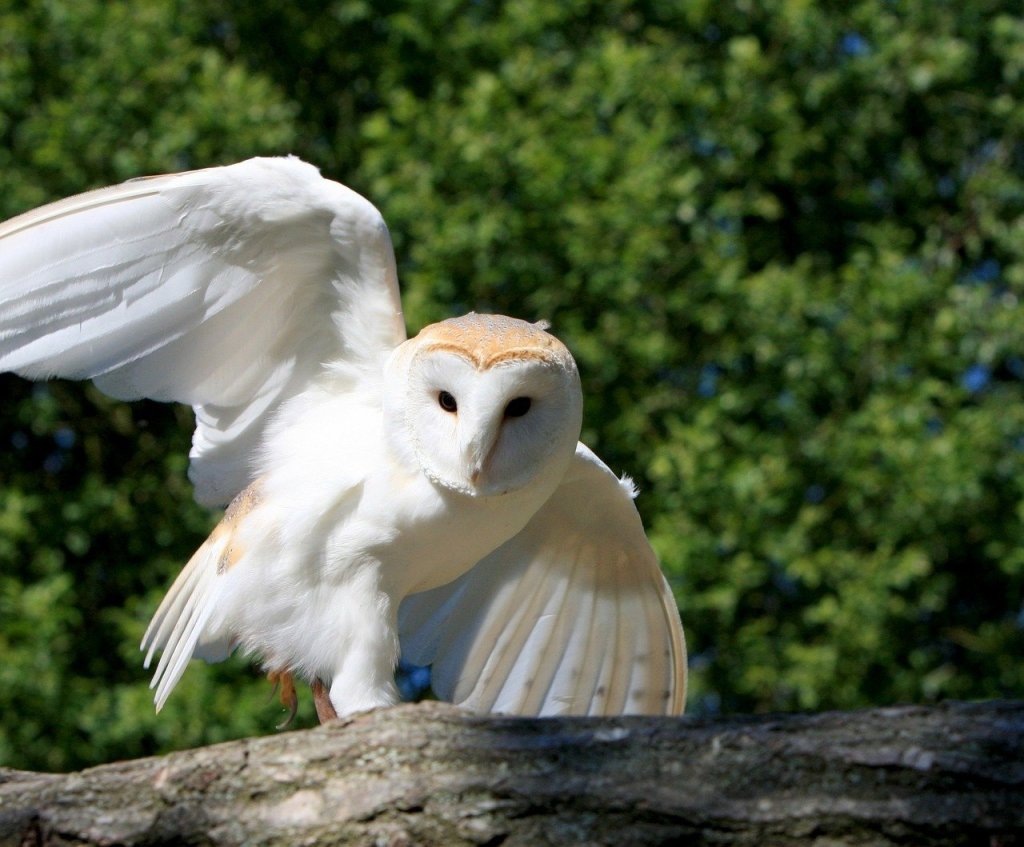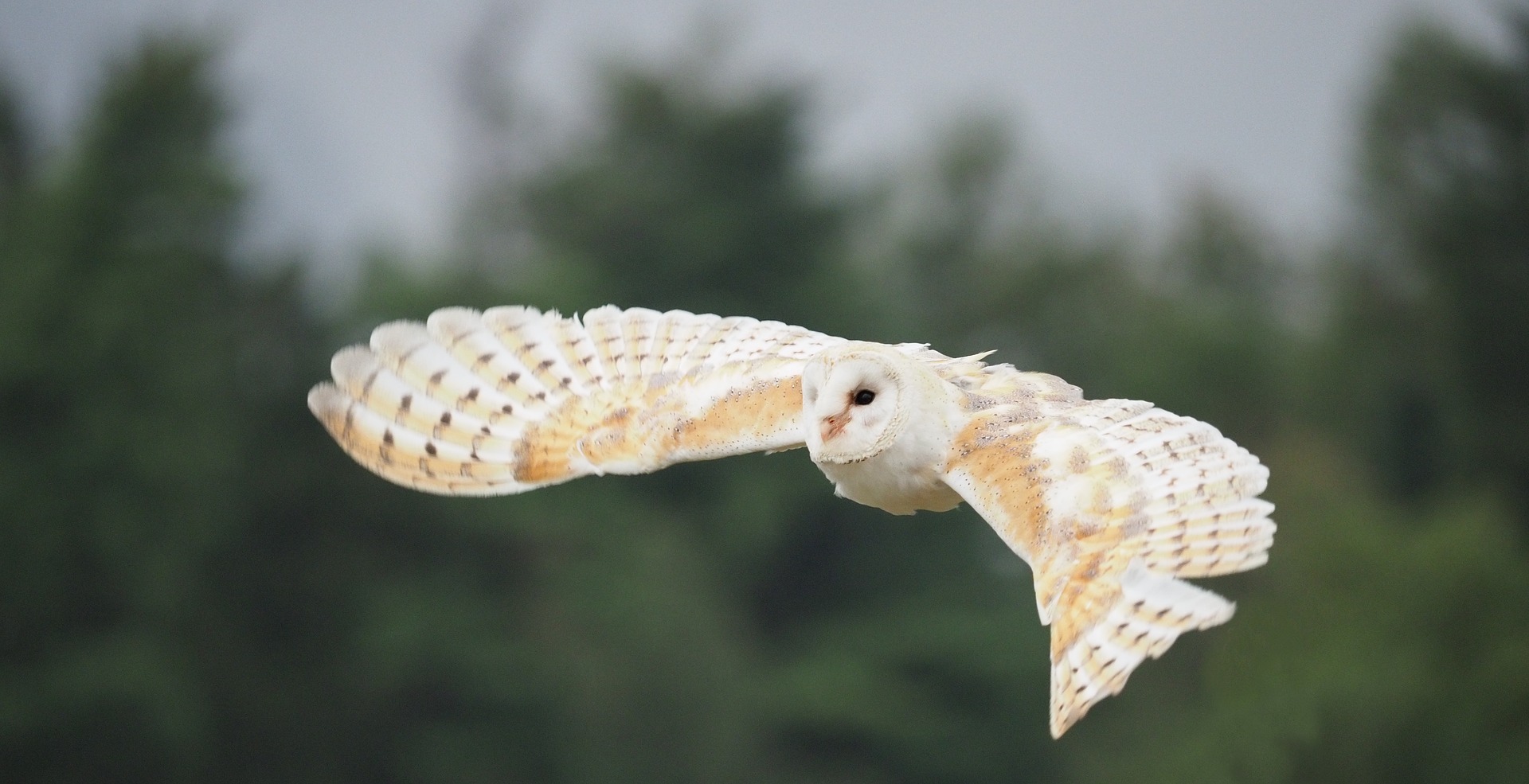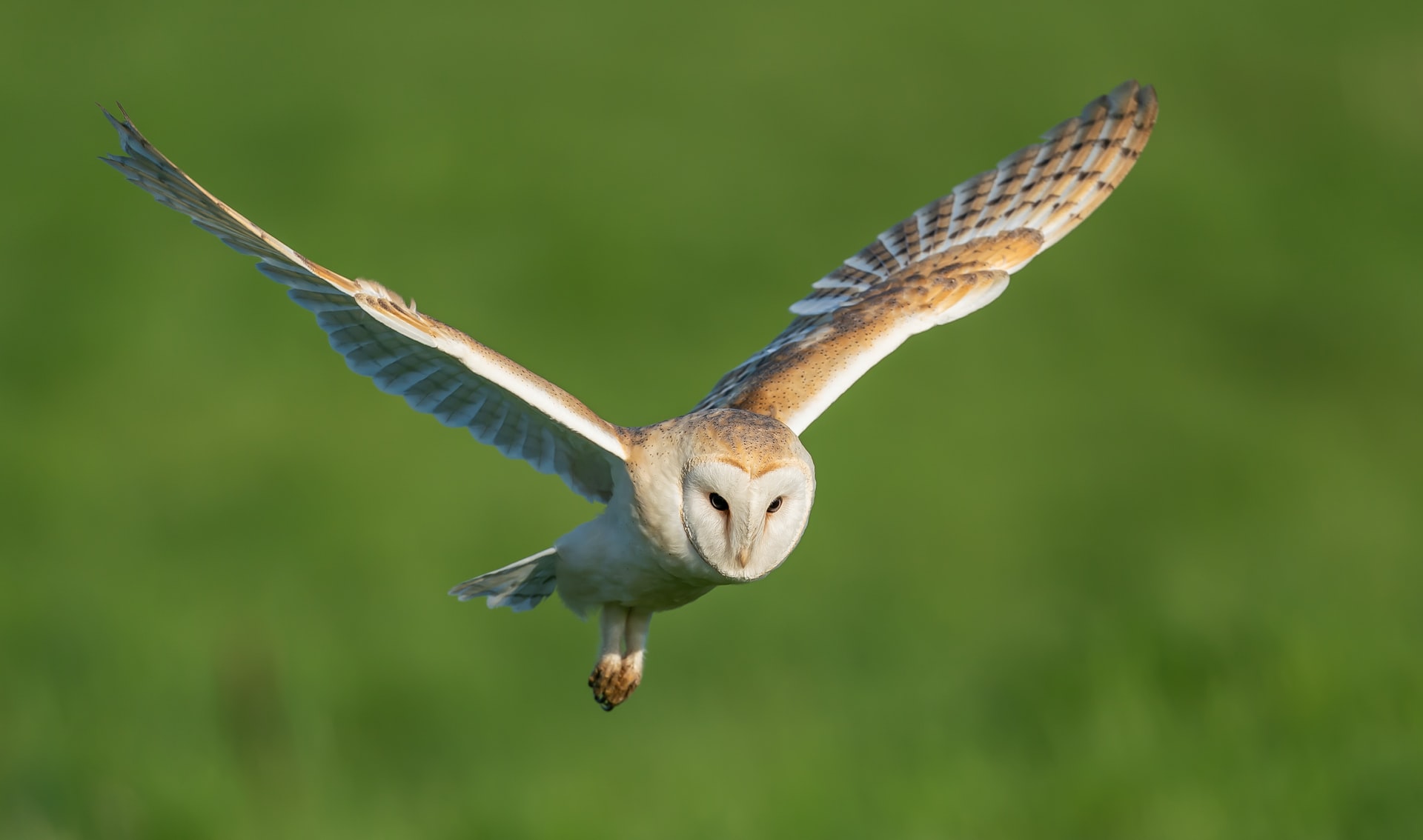Barn Owls seem to be everywhere on the internet these days, which makes sense since they’re almost everywhere, period. They inhabit more places in the world than any other species of owl, and they’re one of the most widespread of any land bird. Their superb hunting ability helps to explain their success. The Barn Owl’s prowess in this area centers on a few key attributes: wings that enable it to fly almost noiselessly; a face shaped like a radar dish that collects even the slightest noise produced by prey; and an acute sense of hearing that depends partially on ears set at different heights on either side of its head.
First, like most owls, Barn Owls make almost no noise when they fly. The structure of their wing feathers account for the silence. Those at the leading edge of the wing are serrated and stiff, like the tines of a comb. Feathers at the trailing edge terminate in a flexible fringe. Finally, atop the wing is a layer of soft down. Together, these features tame the turbulence that all wings–bird or manmade–generate as they pass through the air. So silent are owls’ wings, in fact, that engineers study them in hopes of designing quieter aircraft and wind turbines.

Some Barn Owls possess an additional advantage while flying–the lighter color of their undersides. Barn Owls range from darker to lighter rusty browns, tans, and grays. The undersides of some specimens show various shades of these colors, too, while others appear almost pure white. Males and younger owls tend to lighter shading. Barn Owls with light to white undersides have been shown in studies to produce a stunning effect on prey.
For example, experimenters discovered that during a full moon, voles froze in apparent shock when presented with the image of a diving white Barn Owl. Voles did not act like this with darker Barn Owls, instead running away at first sight of the attacking predator. Nor did the voles freeze during low light situations. Only during bright moonlight, with the light reflecting off the owl’s white feathers, did the rodent sit transfixed long enough to be captured. It’s true that it amounts to a small advantage not always available, but every little bit helps: Experimenters noted that white Barn Owls hatched more offspring than their darker cousins, an outcome they attributed to more food.

Even with the advantages of silent flying and favorable coloration, Barn Owls will starve if they can’t locate prey. While they have excellent low-light vision, they prefer to hunt at night. It is with their ability to pinpoint prey in total darkness by sound alone that Barn Owls outpace all other owls.
The shape of a Barn Owl’s head funnels sound to its ears, much like the parabolic shape of a satellite dish focuses a signal toward a central receiver. The outer fringe of feathers that ring its head in the vague shape of a heart, the vertical ridge of feathers between its eyes, even the downturned beak–all channel sounds toward ears hidden on either side of its head. The uneven placement of the ears, with one slightly higher than the other (drawing below), enables the Barn Owl to process sound from different angles.


In flight or perched, Barn Owls constantly move their heads back and forth. One reason for this is that owls’ eyes are fixed in their heads, so they must turn to see something straight ahead. But bobbing and weaving also helps them to locate noise. If they hear movement louder in one ear than the other, the owl turns until the sound balances across both ears. Remarkably, even a sound delay of 30 millionths of a second prompts a slight turn as the owl hones in on the source.

With the ability to float through the air in almost total silence while tracking tiny prey deep in the grass or even under snow, the Barn Owl is built to achieve hunting success. For a quick look at this formidable raptor in action, check out this short video from BBC Earth.
Thanks for reading and let me know what you think of the post.
Works Cited
“3D-Printed, Ultra-quiet Turbine Blades Designed After Owl Wings.” TheCivilEngineer.org.
American Institute of Physics. “Owls’ ability to fly in acoustic stealth provides clues to mitigating conventional aircraft noise.” Phys.org. 19 Nov 2012.
American Physical Society. “The Secrets of Owls’ Near Noiseless Wings.” Phys.org. 24 Nov 2013.
Andrews, Candice Gaukel. “Video: Owls Have Heads Designed For Hearing.” Good Nature Travel. 9 Apr 2019.
Bachmann, Thomas et al. “Morphometric characterisation of wing feathers of the barn owl Tyto alba pratincola and the pigeon Columba livia.” Frontiers in Zoology volume 4, Article number: 23 (2007).
“Barn Owl.” U.S. Fish & Wildlife Service.
“Barn Owl.” Wikipedia.
“Barn Owl Guide: How They Hund and Where to See in the UK.” Discover Wildlife.
“Barn Owl Hunting and Feeding.” The Barn Owl Trust.
Frederick, Eva. “White Barn Owl’s Feathers Reflect Moonlight to Stun Prey.” Science Mag. 3 Sep 2019.
Kaufman, Kenn. “Barn Owl.” Audubon.
Mackenzie, Dana. “To Silence Wind Turbines and Airplanes, Engineers Are Studying Owl Wings.” Smithsonian Magazine. 15 Apr 2020.
Ogden, Lesley Evans. “The Silent Flight of Owls, Explained.” Audubon. 28 July 2017.
“Owl.’ Wikipedia.
Stevens, Alison Pearce. “Standing Out Helps Barn Owls on the Hunt.” Science New for Students. 5 Nov 2019.
Stevenson, John. “Small Finlets on Owl Feathers Point the Way to Less Aircraft Noise.” Phys.org. 18 Nov 2020.
Wagner, Hermann et al. “Features of Owl Wings That Promote Silent Flight.” Interface Focus. 6 Feb 2017.
“Why Do Owls Bob Their Heads?” Audubon podcast.
Yirka, Bob. “Barn Owls Found to Suffer No Hearing Loss as They Age.” Phys.org. 20 Sep 2017.
Categories: animals






great photo’s:)
LikeLike